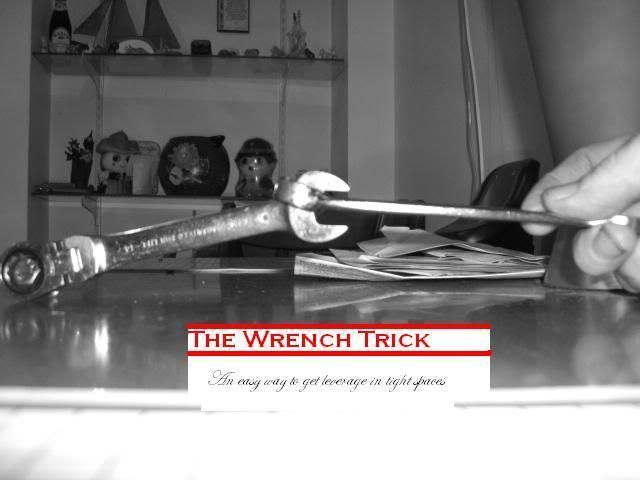Originally posted by doylna
View Post
some comments:
he takes the whole caliper assembly off the mounting bracket--as I recall, you don't need to do that. Just remove the lower mounting bolt so you can rotate the assembly up on its top pivot bolt to get at the pads.
also, our cars use a 19mm lug nut on the wheels (at least mine does), not the 18mm he describes for the later model Accord.
watch out when you press the brake caliper piston back--check your brake fluid reservoir first,and take a little fluid out of it to make room for the fluid you will press back into the reservoir from the brake line. Press the piston back part way, then look at your brake fluid reservoir again and, if necessary, take some fluid out with a turkey baster or spoon (a teaspoon whose handle you bend so it acts like a deep dipper or "ladle" is effective and cheap if you don't have a baster that you're willing to dedicate to car repair) so it doesn't overflow. Then finish pressing the piston all the way back to make room to put the pads back in. Put a *little* dab of high temp synthetic brake grease (or get the special antisqueal compound, or just don't bother, those are your 3 options) on the back of the brake pad between it and the metal shield to help dampen vibration and prevent.reduce brake squealing sound.
I was amazed at how simple and basic the braking system was when i did this job, for the first time in my life, last year. Very simple, yet people are very afraid, out of lack of knowledge and familiarity, to deal with it themselves.
have fun and good luck.
One thing he didn't show: Spray down the caliper and the rotor with brake cleaner (with a fluid pan underneath to catch the runoff) before disassembling the pads/caliper and wear a mask while doing it and, preferably , while working in the vicinity.




 __
__
Comment